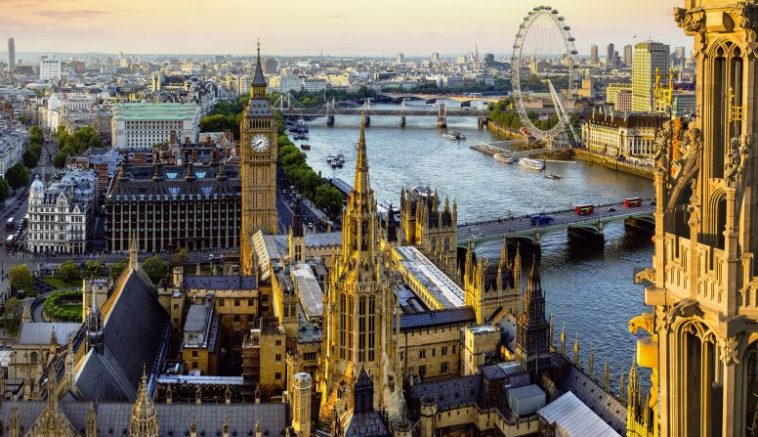Introduction.
Studying in the UK can be an exciting opportunity to experience world-class education, explore a new culture, and open up doors for your future.
But before you can pack your bags and head off, there’s an important step you need to handle—the UK student visa application process.
If the idea of navigating visa applications feels overwhelming, you’re not alone. I’m here to break it all down for you so you can approach this step with confidence.
In this guide, I’ll explain everything you need to know about the UK student visa, from eligibility requirements to the step-by-step application process.
By the end, you’ll feel prepared and ready to take the next step toward studying in the UK.
Why Is a UK Student Visa Important?
If you’re planning to study in the UK and you’re from a country outside the UK or Ireland, you’ll need a student visa. This visa isn’t just a formality—it’s your legal permission to live and study in the UK.
Without it, you won’t be able to attend classes, work part-time, or enjoy the full benefits of being a student in the UK.
The UK has a long-standing reputation for its universities, with institutions like Oxford, Cambridge, and Imperial College London consistently ranked among the best in the world.
Types of UK Student Visas
The most common visa for international students is the Student visa, formerly known as the Tier 4 (General) student visa. Here’s a quick breakdown of the main student visas:
- Student Visa: For students aged 16 and older pursuing higher education.
- Child Student Visa: For students aged 4 to 17 attending independent schools in the UK.
- Short-term Study Visa: For students taking short courses, like an English language program, that lasts no longer than six months (or 11 months for English language courses).
For most degree-seeking students, the standard Student visa is the one you’ll apply for.
Who Is Eligible for a UK Student Visa?
To apply for a UK student visa, you’ll need to meet a few key requirements:
- Offer from a UK Institution: You must have an unconditional offer to study at a UK university or institution that is licensed to sponsor international students.
- Confirmation of Acceptance for Studies (CAS): Once you accept your offer, your school will send you a CAS, a unique reference number you’ll use in your visa application.
- English Language Skills: You’ll need to prove your English proficiency, usually through a test like IELTS or TOEFL, unless you’re from an English-speaking country.
- Financial Proof: Show you have enough money to pay for your tuition and living expenses. This usually means providing bank statements or proof of a scholarship.
How Do I Apply for a UK Student Visa?
Here’s a simple guide to help you through the application process:
1. Check Your Eligibility
Before starting your application, ensure you meet the basic requirements. Double-check that your chosen university is on the list of licensed student sponsors.
2. Gather the Required Documents
You’ll need several documents for your application, including:
- A valid passport or other travel document.
- Confirmation of Acceptance for Studies (CAS) from your university.
- Proof of financial support (e.g., bank statements).
- Tuberculosis test results (if required for your country).
- Proof of English language proficiency.
3. Submit Your Application Online
Most applications are done online through the UK government’s visa website. Create an account, complete the application form, and upload your documents.
4. Pay the Fees
The student visa application fee is around £363 if you’re applying from outside the UK. You’ll also need to pay the Immigration Health Surcharge, which gives you access to the UK’s National Health Service (NHS). This is typically £470 per year of your stay.
5. Book and Attend a Biometrics Appointment
After submitting your application, you’ll need to schedule a biometrics appointment at a visa application centre. At this appointment, they’ll collect your fingerprints and photographs.
6. Wait for Your Decision
Visa processing usually takes about three weeks, though this can vary depending on where you apply. Once approved, you’ll receive a vignette (sticker) in your passport, which allows you to enter the UK.
7. Collect Your Biometric Residence Permit (BRP)
Once you arrive in the UK, you’ll need to pick up your BRP. This is your official visa document and must be collected within 10 days of your arrival.
FAQs
1. How much money do I need to show in my bank account?
You’ll need to show enough money to cover:
- Tuition fees for one academic year.
- Living costs, are set at £1,334 per month for students in London and £1,023 per month for students outside London (up to 9 months).
2. Can I work on a UK student visa?
Yes! Most students can work part-time (up to 20 hours per week during term time) and full-time during holidays.
3. What if my visa application is rejected?
If your application is rejected, the decision letter will explain why. Depending on the reason, you might be able to appeal, reapply, or request an administrative review.
4. When should I apply for my visa?
You can apply for your student visa up to 6 months before your course starts if you’re applying from outside the UK.
Additional Resources
If you’re still unsure about something, check out these helpful links:
Conclusion
Applying for a UK student visa may seem like a lot, but with the right preparation, it’s manageable.
By following these steps and staying organized, you’ll be on your way to studying in the UK in no time.
What’s your biggest concern about applying for a UK student visa? Let me know—I’d love to help!





GIPHY App Key not set. Please check settings